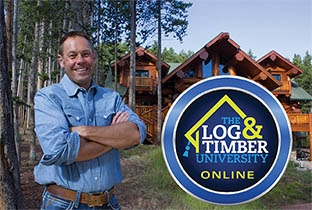
Magnificent trees are often what seal the deal on a particular property – towering pines, privacy, shade, dappled light and a sense of something older and larger that calms the nervous system.
Living in partnership with those trees, however, can be a startling lesson in the power of nature, and the cost of cabin ownership.
Humans have a long and deep connection to trees. Scientists have established strong parallels between humans and trees, noting that we have a strong preference for forested landscapes. We even share similar physical characteristics: standing upright with limbs and a crown on top. There’s a remarkable resemblance between our lungs and a tree canopy.
Trees provide oxygen, create sun and wind protection and serve as homes for birds and animals. The benefit of trees extends beyond ambiance. On a practical level, property values are distinctly affected by tree cover, increasing bottom lines by 15 percent.
“Start with learning the names and characteristics of your trees, then move on to understanding the bigger forest in which you live,” Austin VanScoy advises. VanScoy spends a good deal of time in trees as the owner of Dutchman Trees Services, based in the cabin country of Ely, Minnesota, where paved roads poke deep into the wilderness. “Then understand that as long as it's in existence, that forest will try to overtake and overrun your cabin, whether you’re there or not.”
If that sounds like a battle, VanScoy suggests adjusting your point of view.
“Trees are smarter than we are, that’s my theory,” says VanScoy. “They’re hard to communicate with because their conversations are long and ours are really quick. When you put humans into the forest, that forest will still try to be a first whether your place is there or not. I think a lot of people have forgotten that.”
Many cabin owners meet the local tree trimmers in an emergency, after a storm. VanScoy says not to wait for disaster because, in cabin country, “it’s always the season of high winds and storms.”
“Meet the people you’re considering hiring, that you’re going to trust on your property. They’re going to do things that are permanent. What’s the training? Check their insurance and trust your gut,” VanScoy says. He also recommends researching the laws in your area regarding arborists and credentials. For the most part, nationwide, it is an unregulated trade. “You could go out and start a business as a tree person with zero experience.”
Tree services are not inexpensive. Homeowner’s insurance pays for tree removal from your roof, but not your driveway or yard. Nor will insurance pay for tree trimming if a raccoon is using your oak for a ladder to your attic.
Tempted to do it yourself? VanScoy says the main consideration is self-protection and ergonomics. Chainsaws are heavy, and trees are heavier.
“Slipping and falling are real dangers,” he says. “More injuries occur from falling and twisting than cutting. All that gets made worse when you don’t know the limits, because running a chainsaw even for a tank of fuel is going to burn you out. And if you think you’re going to involve ladders, go watch some YouTube videos to learn what not to do.”
Given climate change and the growing intensity of storms and wildfires, many cabin owners are keen to mitigate fire danger by creating defensible space, a buffer space. Dropping and removing dead-standing trees on a five- or ten-acre lot is a significant investment and needs serious consideration.
“Fire travels uphill. If we cut all the trees on the hill leading to your house, the hillside will erode,” VanScoy said. “A good tree guy will talk to you about soil, about the entire property. Birch is a great option in our area. It’s fire resistant and they handle heat well. There’s lots to consider.”
A cabin can be modified or even rebuilt, but trees take decades and even centuries to reach maturity. Understanding these trees as neighbors and partners may change your point of view. Developing a relationship with the trees may sound like an unlikely way to understand your cabin forest but is an effective way to begin understanding how to cultivate what you love.










